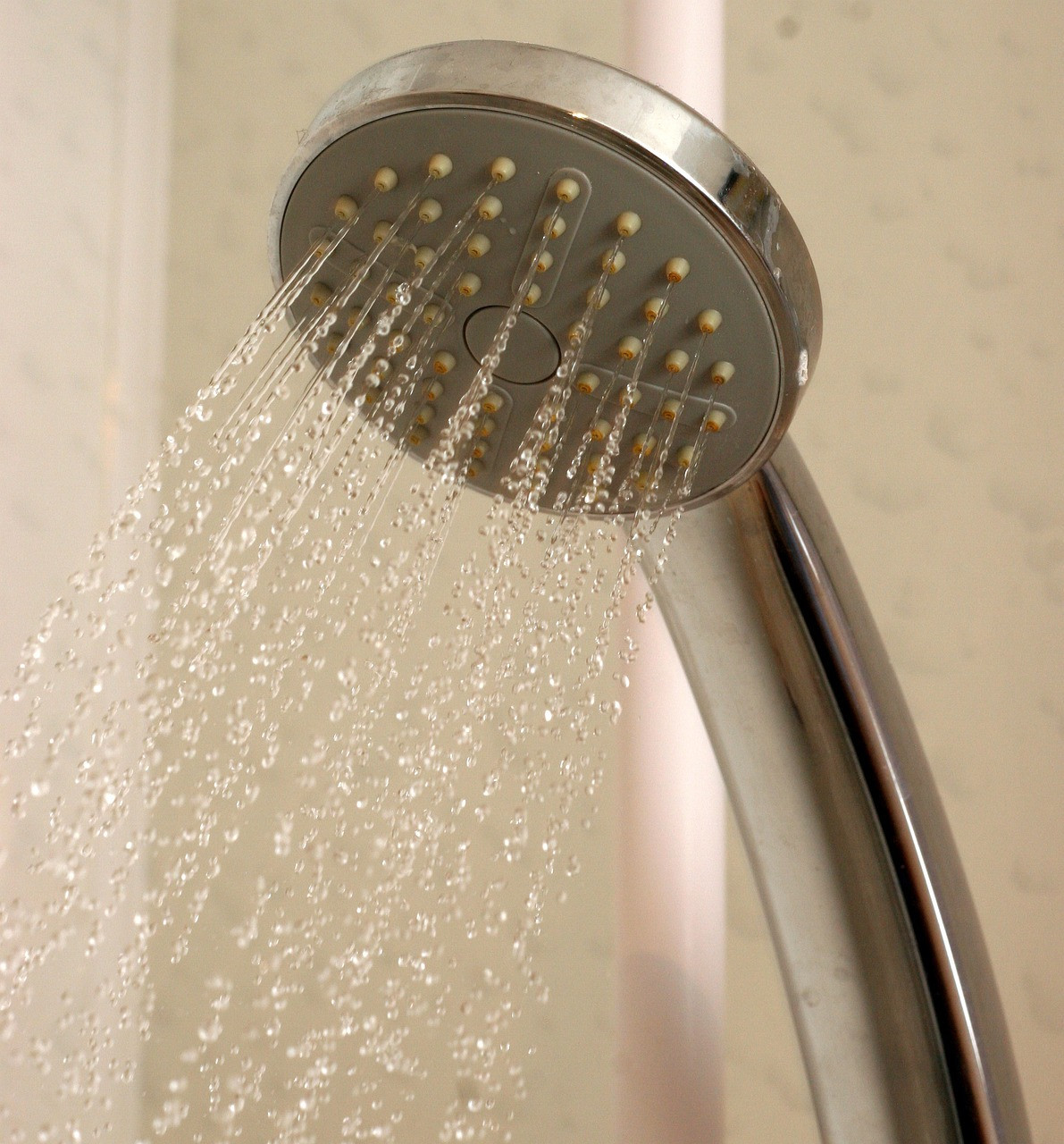Unlock the ancient secrets of cedarwood oil in a modern-day ritual that delivers serenity and vigor. Known for its remarkable benefits—ranging from stimulating the brain to nourishing hair and skin—cedarwood oil transforms the everyday into something extraordinary. Imagine a pre-travel routine devoid of stress and filled with tranquility, where you sleep soundly and emerge with silky, rejuvenated hair. Experience a surge in calm focus and executive function that cuts through mental fog, revealing a sharper, more organized self. Discover how this powerful, yet simple practice, inspired by traditions of old, can enrich your wellness journey with minimal investment for life-changing results. Dive into the full story to find out how cedarwood oil has earned its esteemed place in a wellness routine.
Read more...Winter brings cozy moments, but it can also bring challenges like dry air, colds, and seasonal stress. Essential oils can be a helpful addition to your wellness routine, supporting comfort and relaxation during the colder months.
Eucalyptus: Clear and Refreshing
Eucalyptus essential oil is often used to support a sense of clear breathing. Its invigorating aroma can help create a refreshing environment when diffused. To enhance your winter wellness routine, try adding a few drops to a diffuser or a bowl of steaming water for a soothing, spa-like experience. You can also apply to the sinus and lung acupressure points.
Lavender: Calm and Soothing
Known for its calming properties, lavender essential oil is perfect for promoting relaxation during the busy winter months. Whether added to a warm bath, diffused in the bedroom before sleep, or blended into a carrier oil for a gentle massage, lavender can help create a serene atmosphere in your home.
Lemon: Bright and Uplifting
Lemon essential oil is loved for its crisp, uplifting scent. It can be diffused to help create a fresh and inviting indoor space during the season when windows are often closed. Its vibrant aroma is perfect for boosting your mood and adding a little sunshine to gray winter days. You can also put a drop in your water.
Thieves Blend: Warm and Invigorating
Thieves essential oil blend, which contains clove, cinnamon bark, lemon, eucalyptus, and rosemary oils, is a winter favorite for its warm and spicy aroma. Diffuse Thieves to help create a cozy atmosphere or mix a few drops with a carrier oil for a soothing foot massage after a chilly day. The blend’s rich scent is perfect for the season, adding comfort to your home environment. You can also apply to the spinal acupressure points.
How to Use Essential Oils Safely
- Dilute essential oils with a carrier oil, such as coconut or almond oil, before applying them to the skin.
- Use only high-quality, genuine essential oils from reputable sources.
- Follow product guidelines and consult with a healthcare provider if you are pregnant, nursing, or have specific medical conditions.
Incorporating oils like eucalyptus, lavender, lemon, and Thieves blend can enhance your wellness routine. These oils can create a calming, uplifting, and refreshing environment, making the winter months more comfortable and enjoyable.
My blogs contain some affiliate links.
Any purchase made is a blessing to my family at no extra cost to you!
Thank you for supporting us!


Shower steamers are an easy, effective way to turn your daily shower into a spa-like experience. These little blocks, packed with essential oils, release relaxing or invigorating scents when exposed to water. You can customize them with your favorite essential oils and enjoy aromatherapy benefits any time you shower. Here’s a simple recipe to make your own DIY shower steamers.
DIY Shower Steamer Recipe
Ingredients
* 1 cup baking soda
* ½ cup citric acid
* ½ cup cornstarch (for binding and structure)
* Essential oils (15-20 drops, customized based on scent preferences)
- Peppermint or eucalyptus for clearing sinuses
* Witch hazel (in a spray bottle)
* Silicone mold (small shapes work best for one-time use)
Directions
1. Combine Dry Ingredients: In a large mixing bowl, combine the baking soda, citric acid, and cornstarch. Mix well to ensure an even distribution of ingredients.
2. Add Essential Oils: Add 15-20 drops of essential oil(s) to the dry mixture, adjusting based on scent preference. Stir thoroughly to distribute the oils evenly.
3. Moisten with Witch Hazel: Lightly spritz the mixture with witch hazel to help it bind. Spray slowly and mix well after each spritz until the mixture holds its shape when squeezed without being overly wet.
4. Mold the Mixture: Pack the mixture firmly into the silicone mold, pressing down to eliminate any air bubbles.
5. Dry Overnight: Allow the shower steamers to dry in the mold overnight or until they’re hard to the touch. Once dry, gently pop them out of the mold.
6. Store in a Sealed Container: Keep the shower steamers in an airtight container to prevent moisture from activating them prematurely.
How to Use Your Shower Steamers
To use, simply place one steamer on the shower floor, close enough to the water stream for it to dissolve slowly but not directly under running water. As the steamer fizzes, it will release the essential oils into the steam, creating a therapeutic experience for you to enjoy.
Creating shower steamers at home is a simple and cost-effective way to add a touch of luxury to your everyday routine. Customize the oils to suit your mood and enjoy the benefits of aromatherapy in your shower!
My blogs contain some affiliate links.
Any purchase made is a blessing to my family at no extra cost to you!
Thank you for supporting us!


Are you struggling to get your child to sit still and pay attention? It’s a common challenge, especially in today’s fast-paced world. But don't worry, there are natural ways to help improve their concentration and focus. This guide will empower holistic moms and families dedicated to wellness with practical tips and strategies to enhance their child's ability to concentrate. By the end of this post, you'll have a toolbox of solutions that promote a balanced and healthy lifestyle.
The Importance of a Balanced Diet and Proper Hydration
Nutrition
What your child eats plays a significant role in their ability to focus. A diet rich in whole foods provides the essential nutrients their brain needs to function optimally.
- Fruits and Vegetables: These are packed with vitamins and minerals crucial for cognitive function. Leafy greens like spinach and kale are particularly beneficial.
- Whole Grains: Foods like oatmeal and quinoa offer a steady release of energy, helping to maintain focus throughout the day.
- Protein: Beans and nuts are excellent sources of protein, which is vital for brain health and neurotransmitter function.
- Healthy Fats: Found in fish, avocados, and nuts, these fats support brain development and function.
Hydration
Even mild dehydration can impact your child’s concentration. Ensure your child drinks plenty of water throughout the day. A general guideline is eight 8-ounce glasses of water daily, but this can vary based on activity level and climate.
- Ensure they have their favorite water bottle ready to go when you are going out.
- Make drinking fun with fruit and vegetable infused water.
- Encourage drinking water instead of sugar-filled drinks, or artificially flavored or colored drinks.
The Power of Regular Physical Activity
Exercise
Incorporating regular physical activity into your child's routine can significantly boost their focus and overall brain function.
- Aerobic Activities: Activities like running, swimming, and cycling not only improve physical health but also enhance cognitive function.
- Team Sports: Engaging in sports like soccer or basketball helps develop social skills and encourages teamwork, which can further aid concentration.
- Yoga and Mindfulness: These practices teach children how to focus and relax, providing lifelong tools for managing stress and maintaining concentration.
Encouraging Play
Ensure your child gets at least an hour of physical activity daily. This can be a mix of structured activities like sports and unstructured play, which is just as important for their development. Sitting for TV or video games should not exceed a 1/2 hour to an hour depending on age before encouraging them to get up and move again.
The Benefits of a Structured Routine and Breaks
Consistent Schedule
Children thrive on routine. A predictable daily schedule helps them know what to expect and when to focus on specific tasks.
- Morning Routine: Start the day with a healthy breakfast and some light physical activity to wake up their bodies and minds.
- Homework Time: Set a consistent time each day for schoolwork, so your child knows when it's time to concentrate.
- Bedtime Ritual: A calming bedtime routine ensures they get enough sleep, which is essential for focus and overall health.
Breaks
Short, frequent breaks help prevent burnout and maintain high levels of focus. The Pomodoro Technique, which involves 25 minutes of focused work followed by a 5-minute break, can be adapted for children. This method keeps their mind fresh and engaged.
How to Minimize Distractions
Environment
Creating a distraction-free environment is crucial for helping your child concentrate.
- Quiet Space: Designate a quiet area for homework and focused activities. Ensure it is well-lit and comfortable.
- Limited Screen Time: Reduce exposure to screens during homework time. Encourage screen-free periods to minimize distractions from phones, TVs, and tablets.
- Organized Space: Keep their study area tidy and free of clutter. An organized space promotes a clear mind.
Creating a Focus-Friendly Zone
Designate a specific area in your home for focused activities. This can be a corner of a room with a desk and necessary supplies, free from distractions.
The Role of Mindfulness and Relaxation Techniques
Mindfulness Activities
Teaching your child mindfulness can significantly enhance their focus and reduce stress.
- Breathing Exercises: Simple breathing exercises can help calm their minds and improve concentration. Try deep breathing before starting homework.
- Mindfulness Games: Engage your child in games that require focus, such as puzzles or memory games. These activities enhance their attention span in a fun way.
- Guided Imagery: Visualization techniques where children imagine peaceful and focused scenarios can help improve their concentration.
Family Relaxation Time
Introduce simple mindfulness practices that can be done together as a family, such as prayer and deep breathing exercises before bedtime. This not only benefits your child but also strengthens family bonds.
Incorporating Essential Oils for Enhanced Focus
Benefits of Essential Oils
Essential oils can be a great addition to your focus-enhancing toolkit. Certain oils are known for their calming and concentration-boosting properties.
- Lavender: Known for its calming effects, lavender oil can help reduce anxiety and stress, promoting a more focused mind.
- Peppermint: This invigorating oil can enhance alertness and concentration. Diffusing peppermint oil while your child studies can help maintain their focus.
- Rosemary: Often used to improve memory and cognitive performance, rosemary oil can be a helpful tool in your child’s study routine.
- Cedarwood: This is known to promote relaxation and mental alertness: think of Solomon and the Cedars of Lebanon that enhanced his wisdom.
Using Essential Oils
Diffuse these oils in your home, particularly in areas where your child spends time studying. You can also consider using a personal inhaler or applying diluted oils to their wrists or neck.
Implementing These Strategies
Nutrient-Dense Snacks
Offer snacks like fruits, nuts, and yogurt throughout the day to maintain steady energy levels. These nutrient-rich foods keep your child's brain fueled and focused.
Encouraging Physical Play
Ensure children get at least an hour of physical activity each day, with a mix of structured and unstructured play. This not only benefits their physical health but also enhances their ability to concentrate.
Establishing Routines
Develop a consistent daily schedule that includes regular study times, meals, and bedtimes. A structured routine helps your child know what to expect and when to focus.
Designing a Study Area
Create a dedicated, quiet space for homework and other focused activities. Ensure it is well-organized and free of distractions to promote a clear mind.
Teaching Relaxation Techniques
Introduce simple mindfulness practices that can be done together as a family, such as deep breathing exercises before bedtime. This not only benefits your child’s focus but also strengthens family bonds.
Incorporating Essential Oils
Diffuse essential oils for a calming, refreshing atmosphere. Or create the DIY recipe for a roller-ball below.
You can do it!
Helping your child improve their focus requires a combination of lifestyle adjustments, environmental changes, and specific activities. By implementing a balanced diet, regular physical activity, a structured routine, a distraction-free environment, and mindfulness practices, you can create a supportive atmosphere that enhances your child's ability to concentrate.
Remember, these strategies are not just about improving focus but also about fostering a healthy and balanced lifestyle. If you’re looking for more personalized advice, consider booking a consultation with one of our family wellness experts. They can provide tailored recommendations to help your child thrive.
Focus Blend
Keep your kids calm and focused during quiet time or study sessions with this soothing essential oil blend.
FOCUS Ingredients:
- 5 drops lavender essential oil
- 5 drops cedarwood essential oil
- 5 drops orange essential oil
- 2 drops vetiver essential oil
- 2 drops frankincense essential oil
- 2 drops peppermint essential oil
Instructions:
1. Add the essential oils to your diffuser with water as recommended by the manufacturer and diffuse in the room where your kids are spending quiet time.
2. Add the essential oils to a roller bottle and top up with a carrier oil like fractionated coconut oil. Apply to wrists or the back of the neck for a calming effect.
My blogs contain some affiliate links.
Any purchase made is a blessing to my family at no extra cost to you!
Thank you for supporting us!


Perfect for a fun summer activity, these Aromatherapy Salt Dough Ornaments allow kids to use their creativity and enjoy the calming or uplifting scents of essential oils.
🌟 DIY Aromatherapy Salt Dough Ornaments
Materials Needed:
- 2 cups all-purpose flour
- 1 cup salt
- 1 cup water
- 1-2 tablespoons of coconut oil (for smoother dough)
- Small skewer or straw (to make holes for hanging)
Instructions
1. Make the Dough:
- In a large mixing bowl, combine 2 cups of flour and 1 cup of salt.
- Gradually add 1 cup of water and 1-2 tablespoons of vegetable oil to the dry mixture.
- Stir until the mixture forms a dough.
- Knead the dough on a lightly floured surface until it becomes smooth and elastic. If the dough is too sticky, add a little more flour; if it’s too dry, add a bit more water.
2. Incorporate Essential Oils:
- Flatten the dough slightly and add 5-10 drops of your chosen essential oils.
- Knead the dough thoroughly to distribute the scent evenly. This step not only makes the ornaments smell great but also adds an aromatherapy element to the activity.
3. Roll and Shape:
- Roll out the dough to about 1/4 inch thickness on parchment paper or a silicone baking mat.
- Use cookie cutters or shape molds to cut out various shapes. Encourage kids to be creative and explore different designs.
4. Create Hanging Holes:
- Use a skewer or straw to poke a small hole at the top of each shape. This is where the ribbon or twine will go for hanging the ornaments.
5. Dry the Ornaments:
- Baking Method: Place the shaped dough on a baking sheet lined with parchment paper. Bake at 200°F (93°C) for 2-3 hours, or until the dough is hard and completely dry. Check occasionally to prevent over-browning.
- Air Drying Method: Let the shapes air dry at room temperature for several days until completely hard. Turn them occasionally to ensure even drying.
6. Decorate (Optional):
- Once the ornaments are dry, kids can paint and decorate them as desired. Allow any paint to dry completely before handling.
7. Add Hanging String:
- Thread a piece of ribbon or twine through the hole in each ornament. Tie a knot to secure it and create a loop for hanging.
- For Calming Effects:
- Lavender: Promotes relaxation and reduces stress.
- Chamomile: Soothes and calms.
- Cedarwood: Provides grounding and a sense of stability.
- For Uplifting Effects:
- Lemon: Refreshes and uplifts the mood.
- Orange: Brings cheerfulness and energy.
- Peppermint: Stimulates and invigorates the senses.
Benefits of Aromatherapy Salt Dough Ornaments:
- Sensory Play: Combining the tactile experience of dough with the olfactory delight of essential oils.
- Creative Expression: Kids can shape, mold, and decorate their ornaments, enhancing their creativity.
- Aromatherapy: Enjoy the therapeutic benefits of essential oils, whether calming or energizing.
- Memorable Keepsakes: These ornaments can be cherished as keepsakes or shared as thoughtful gifts.
Enjoy this delightful craft and let your kids explore the wonderful world of essential oils and creativity!
My blogs contain some affiliate links.
Any purchase made is a blessing to my family at no extra cost to you!
Thank you for supporting us!



